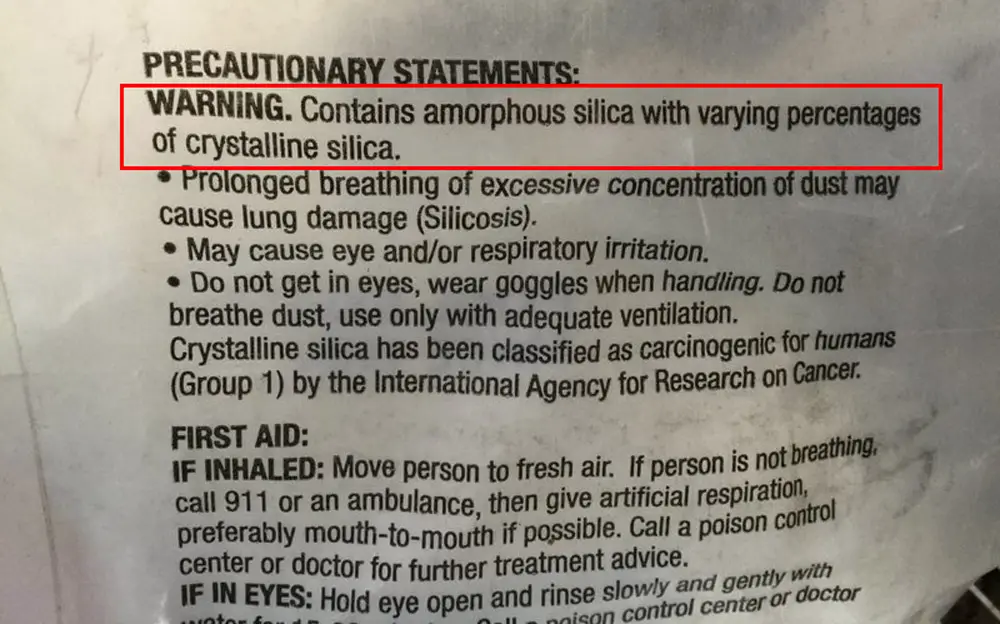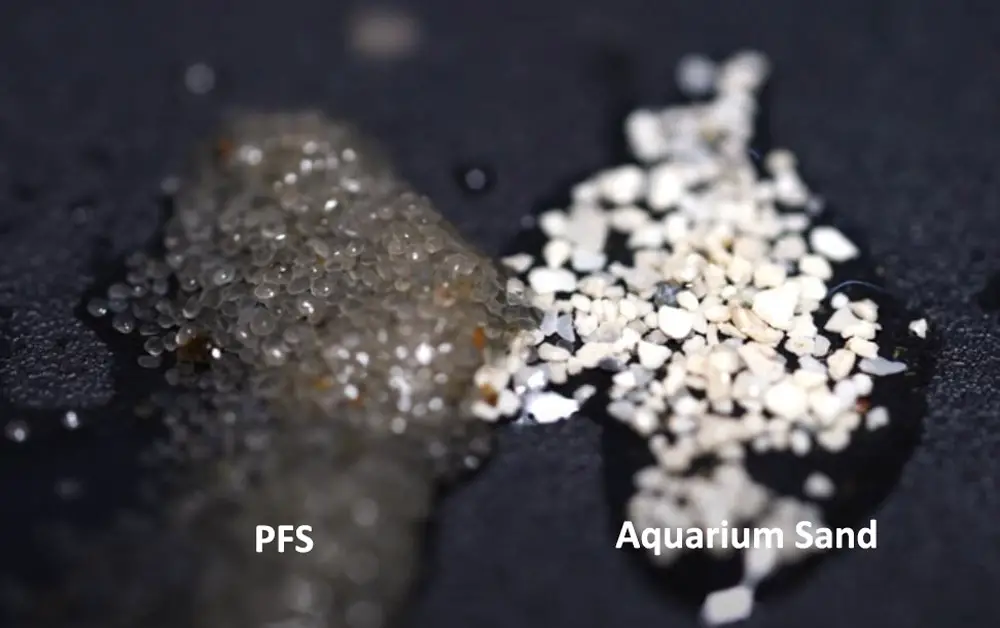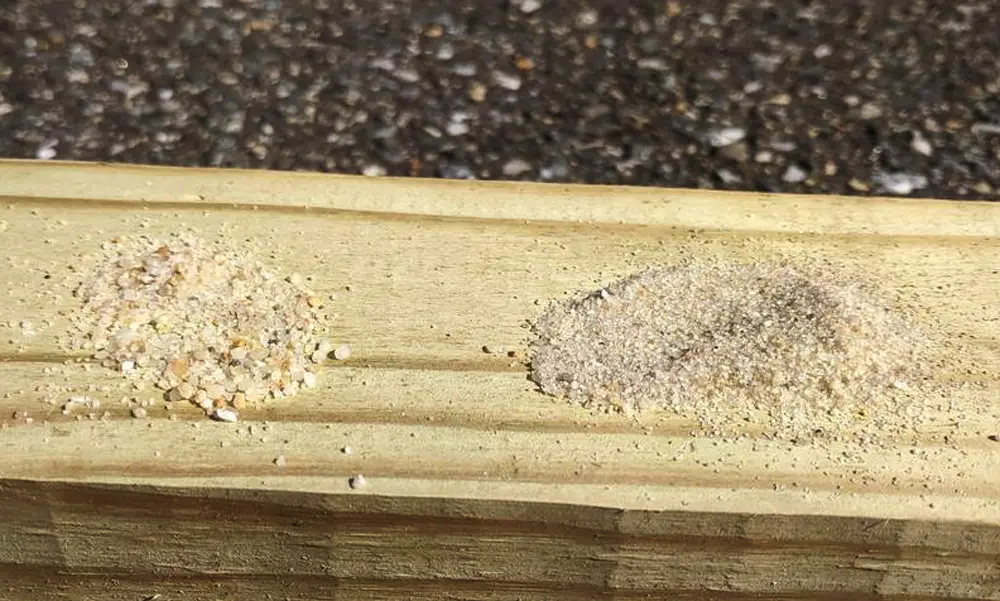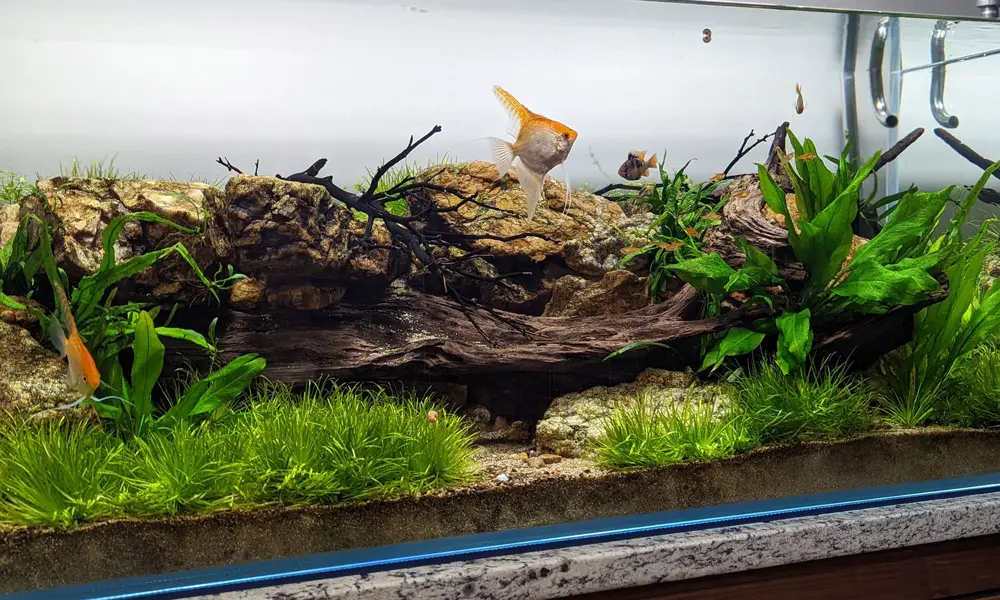It’s no secret that fish keeping can get pretty expensive. The costs can add up quickly between food, tanks, and equipment. But even on a tight budget, there are ways to keep your fish tank looking great without breaking the bank.
One way to keep the budget down on setup is by buying pool filter sand as substrate instead of the more expensive aquarium sand. However, is pool filter sand safe for aquariums since it contains silica that will ruin your tank with a diatom outbreak, or is there other alternatives?
In this article, we’ll go over everything you need to know about pool filter sand – its safety, the good and the bad, alternatives, price, brands, and some tips on how to safely use it in your aquarium.
Can You Use Pool Filter Sand for Aquarium?
PFS (Pool Filter Sand) can be used as substrate in an aquarium as long as you rinse it thoroughly though before use. However, not all swimming pool filter sands are created equal, and there is a chance that they may contain high levels of silica or other additives, which can lead to a horrible brown algae problem in your tank.
The ideal pool filter sands for most aquariums are ones that have NO additives and are as coarse as possible – #20 mesh or a lower number is what you’re looking for.
Author note: #20 refers to the US Standard sieve sand can fall through a mesh made from 20 wires per inch before it is placed in bags.
The Myth of ‘Dangerous’ Quartz Sand in Aquariums
The main reason people are afraid to use cheap pool filter sand containing quartz (the dioxide form of silicon) in their aquarium is they’ve heard that the high amounts of silica will lead to brown algae blooms, especially in new aquariums.
While it’s true that the presence of high amounts of silica in the water may be a primary cause of brown algae, it’s not the silica (aka quartz) that’s the problem. It’s a fact that some pool filter sands also contain high levels of phosphates or other additives that can lead to algae problems.
Typically, silica sand sold under various names, including quartz, crystalline silica, flint, ground silica, and the main ingredients (chemical composition), is around 99.0-99.9% [1] silicon dioxide (SiO2) with a very low percent of other minerals and metals, depending on the source and grade.
In fact, this is the exact same chemical formula as your aquarium glass. If we consider the addition of quartz sand to our aquariums as ‘dangerous,’ then we should also avoid using any glass aquariums.
Another key takeaway is that quartz sand (SiO2) is practically insoluble [2] in water or acids at room temperatures. However, the solubility of amorphous silica (such as aluminosilicate) is higher than crystalline morphologies. It’s also nontoxic for humans and only causes serious lung disease when inhaled.

To be on the safe side, it’s best to avoid product contains amorphous silica, but many aquarists have used them with no problems whatsoever.
Also, silicon-based organisms are not available to any living creature because of their non-molecular structure [3]. Therefore, there will be no changes when the quartz sand passes through the guts of animals in your tank.
Given that, it’s pretty hard to make a case that pool filter sand is going to be ‘dangerous’ for your aquarium. If you see brown algae in a new setup, don’t be discouraged, it’s pretty common. You may just wait for your tank to ‘mature’ and keep scrubbing them off in the meantime.
Why not consider the process of dealing with brown algae as an initiation ritual that every new aquarium owner has to go through to become worthy of a nice and healthy tank?
The Real Danger – Sharp Edges
The actual danger of using pool filter sand in your aquarium is not the silica content but rather the sharp edges of the sand grains, which are formed during the melting process – a purely physical change without any occurrence of chemical reactions.
That’s extremely dangerous for some bottom dwellers, like freshwater stingrays, lionfish, scaleless catfishes that spend a lot of time in contact with the sand since it could open up opportunities for injury.
The Pros & Cons of Pool Filter Sand
Now that we’ve gotten the dangerous part out of the way, let’s look at some of the pros and cons of pool filter sand for a tropical aquarium.
The Benefits
The biggest advantage of PFS (pool filter sand) is the price. A 50-pound bag of pool filter sand costs around $10 ~ $15, while other specialized aquarium sands can cost $1 per pound. That’s a significant saving, especially if you have a large planted aquarium or multiple tanks.
Besides the fact that pool filter sand is cheap, it comes in a more natural color, either beige, tan, or light brown, varying in different brands and regions. The natural look can provide a more earthy feel to your planted aquarium and help create a more natural environment for your fish.
The Disadvantages
Unfortunately, the pool filter sand has some obvious downsides that you should be aware of before using it in your aquarium.
First, pool filter sand is always pretty dirty stuff that absolutely needs to be rinsed several times before being used in your aquarium; even the bag says ‘pre-washed.’ It might be a little bit tedious and time-consuming, but the process is not difficult. (more detail later in this post).
Second, though pool filter sand has a nice color, you have little option compared with other aquarium sands on the market come in a wide variety of colors.
For example, if you are trying to create a natural aquascape with lots of plants and driftwood. The lighter color of pool filter sand can make your aquarium look ‘washed out’ and muted.
Another potential problem with pool filter sand is that it comes with a smaller grain size than commercial aquarium sand, making routine maintenance more difficult. The grain size can be slightly larger or smaller, depending on the brand.
The smaller the grain size, the easier it is for fish and other animals to stir up the sand, which can get into the water column and clog the intakes of your filter.
Last but most importantly, pool filter sand tends to clump up if there are no fish to keep the bottom agitated constantly. Once this happens, it’s impossible to break up the clumps without completely sucking all the sand out of the tank and starting over again.
Moreover, these algae are prone to grow within these clumps, creating an unsightly mess and potentially leading to water quality issues.
Pool Filter Sand Vs. Aquarium Sand

Whether you should use pool filter sand or commercial aquarium sand typically depends on your setup and what exactly you want in the tropical aquarium.
The following table summarizes the pros and cons of pool filter sand and commercial aquarium sand to help you make a decision:
| Aquarium Sand | Pool Filter Sand | |
| Advantages | 1. Available in a wide variety of colors 2. Larger Grains 3. Easy to clean | 1. Cheaper |
| Disadvantages | 1. Expensive | 1. Limited colors 2. Harder to clean 3. Tends to clump up 4. Must be thoroughly washed before use |
Play Sand Vs. Pool Filter Sand
The low price of play sand is why many aquarists choose it as their substrate material. While play sand is relatively cheaper than pool filter sand, I’d go for the pool filter sand over play sand because:
- Play sand is too messy and needs a LOT more time to clean it.
- Play sand has very fine and nonuniform grain sizes, which can cause sand to clump and get into the water column more easily.
BDBS Vs. PFS
Black diamond blasting sand (BDBS) is so popular among aquarists because it’s very cheap and has a nice black color. Honestly, I often use both – HTH pool filter sand as a light substrate and BDBS from Tractor Supply as a dark substrate when I set up my new aquarium.
BDBS has medium-sized grains and doesn’t clump as easily as play sand. I’ve never had any issues with BDBS getting into my filter intakes or water column.
BDBS is way too messy and sometimes has a bit of oily residue. Make sure to rinse it really well before using it in your aquarium. After all, safety should be the top priority.
Best Pool Filter Sands for Aquarium

Thinking about starting a new aquarium with pool filter sand? There are several brands available you can choose from, including HTH, AquaQuartz, and Mystic White.
My personal favorite is HTH brand pool filter sand because it’s the cheapest in my area – it comes in 10 dollars per 50-pound. I’ve never had any problems with clumping or getting into the filter intakes since it has bigger and more irregular darker granules than others.
AquaQuartz pool filter sand is a good choice if you’re looking for a pool filter sand with white color or other brands unavailable in your local store. The price is higher than HTH and can be purchased on Amazon.
[amazon box=”1P7EIADHEFJ04″]How to Prepare Pool Filter Sand for Aquarium Use
Now that we know the pros and cons of pool filter sand, let’s take a look at how to prepare pool filter sand for aquarium use. As I mentioned earlier, pool filter sand needs to be rinsed several times before using it in your aquarium.
Here is a video showing you how to prepare pool filter sand for aquarium use:
Author note: Personally, I often put rocks and other decorations in first, then add pool filter sand on top. This way, it looks more natural.
FAQs:
Where to Buy Pool Filter Sand for Aquarium?
You can buy pool filter sand for aquariums in many places, including your local pool supply store, hardware store, or online.
I usually buy pool filter sand from my local pool supply store because it’s cheaper, and I can pick it up easily.
Will Pool Filter Sand Change ph and TDS?
The pool filter sand is practically insoluble in water, so it won’t change any water chemistry unless it has amorphous silica or other additives.
Is Swimming Pool Filter Sand Healthy Enough for Aquarium Plant Growth?
Pool filter sand by itself is just a substrate material and doesn’t contain nutrients that are necessary for aquarium plants (meaning it is inert). To ensure the healthy growth of your aquarium plants, you’ll need to add a nutrient-rich fertilizer to the pool filter sand.
Does Pool Filter Sand Need to Be Rinsed Off Before Adding to Aquarium?
Absolutely.
Can I Use Pool Filter Sand in Saltwater Aquarium?
Pool Filter Sand has at least 99% pure quartz and would definitely work for a saltwater aquarium.
How Much Pool Filter Sand for Aquarium?
The amount of pool filter sand you need for your aquarium depends on your tank size. You’ll need one inch of sand for small to medium aquariums (10 ~ 50 gallons) and two inches for large tanks (55 gallons or more).
Wrapping Up
By now you should have a better understanding of pool filter sand and whether or not it’s a good choice for your aquarium. As always, the best way to find out is to experiment and see what works best for you and your fish!
If you have any thoughts or feedback about this article, please leave a comment below! We’re committed to improving the content and would love to hear from you.
References:
- U. S. Silica Company Safety Data Sheet [Link]
- Silicon dioxide compound summary [Link]
- Silica Structure & Reactivity in Chemistry [Link]

Ivan, thank you so much for providing this information on pool filter sand which is very helpful in making decisions on what to use. I still need some further information though. I noticed online, that companies do not list the ingredients for pool filter sand. At your recommendation, I was considering using HTH but found out after asking, it does contain amorphous silica. Also, you mentioned the sharp edges, but more information would be helpful on the subject. I specifically want to know if sand sifting fish would would be okay and if black diamond blasting could be an option as well? Would appreciate your opinion on this. Thank you, Sharon.